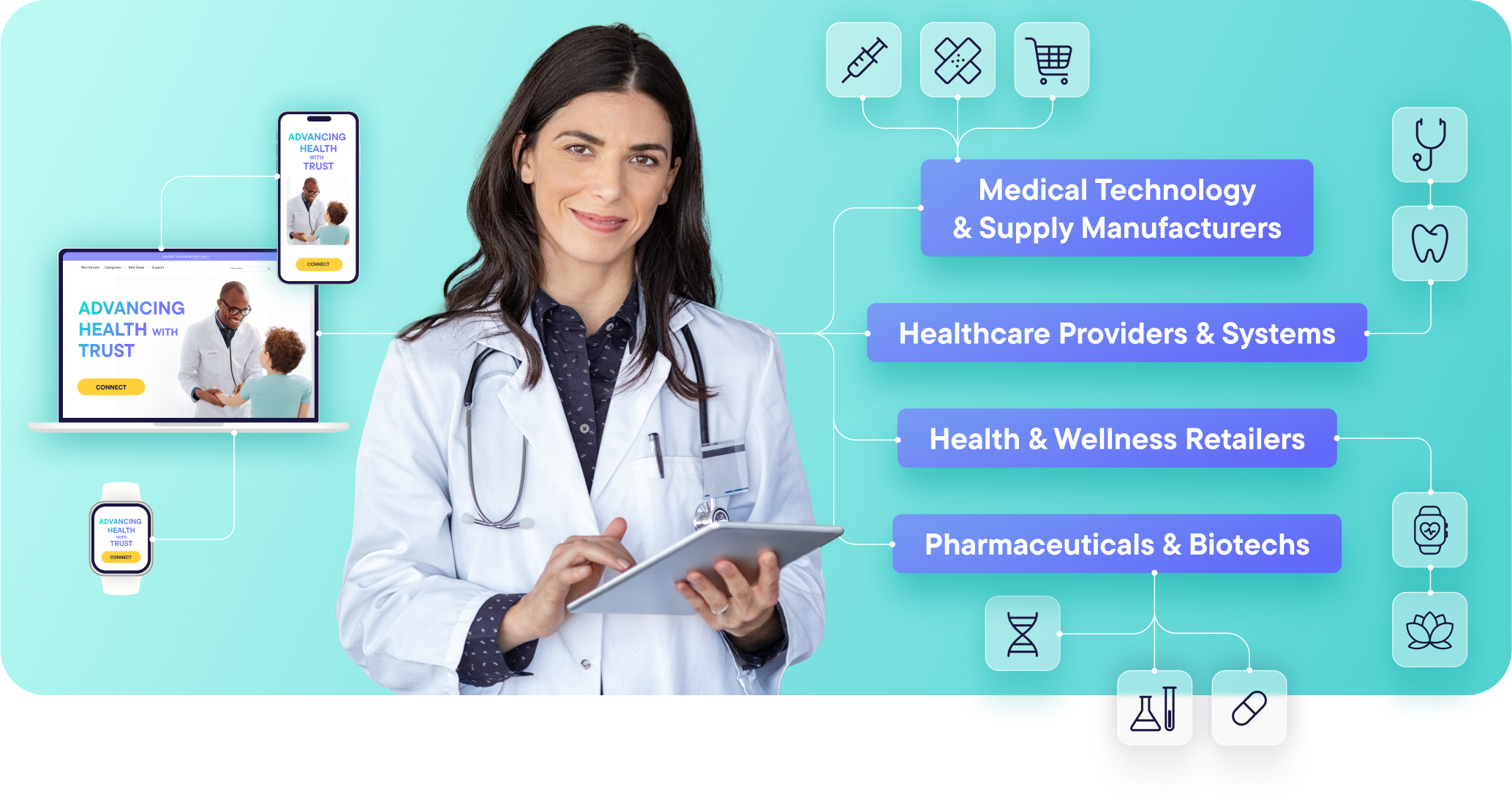Digitally empowered patient experiences. In a heartbeat.
The only platform that empowers healthcare providers to digitize commerce with unparalleled flexibility and enterprise-grade security for sensitive health data.
Let’s talk
The trusted commerce platform for 50+ healthcare businesses
Reimagining healthcare through digital commerce.
Facilitate online ordering of prescription medications. Simplify the procurement of medical equipment through online portals. Empower consumers to find health and wellness products.
With commercetools for Healthcare, a commerce solution designed for health, medtech and life sciences organizations, your business can deliver exceptional digital experiences for patients and B2B buyers, all the while upholding the utmost data security standards.

The commerce engine for healthcare A clean bill of technology health. With composable commerce.
Tap into the flexible, scalable and secure solution, commercetools for Healthcare, to open a world of digital possibilities, no matter where you’re headed next.
Flexibility for multiple business models, brands and more
Sell directly to patients, ramp up hospital B2B procurement with a buyer portal or expand to B2B2C — and everything in between. Run multiple business models and brands on one platform instead of disparate systems.
Scale for global expansion with ease
Easily expand to new markets while meeting country-specific compliance regulations. Get all the components to go global with the peace of mind of protected health data in local markets, including HIPAA compliance in the US and the HDS certification in France.
Automation for efficiency gains and cost savings
Easily automate manual, time-consuming sales and ordering processes. Achieve lower costs while increasing efficiency, and solve systems data interoperability through seamless integrations.
Healthcare leaders that compose commerce for stunning results.
Exploring vital capabilities The heart of your composable implementation.
Everything you need for your composable journey based on the component-based, cloud-native and tech-agnostic commercetools Platform.
Leverage commercetools products and flexible components to harness the full potential of digital commerce across D2C, B2B, B2C, B2B2C and marketplace distribution models.

The feel-good commerce solution for health businesses.
The flexibility, scalability and security of composable commerce united with powerful capabilities for your digital future.
Our integrated product catalog management empowers businesses to manage the most complex product data. Search and discovery capabilities included.
Our powerful pricing and promotions capabilities enable organizations to define and manage unique revenue-generating strategies across any number of stores, products, channels, regions and countries.
Increase conversion rates with robust cart and order capabilities. Allied with inventory management, integration with payment methods and processing, you can create seamless checkout experiences and buyer approval flows.
Compliance practices and certifications, including HIPAA and HDS, GDPR, TISAX® and more. Leverage advanced security tools and a dedicated data storage space for PHI processing.
Track changes with Audit Log Premium for detailed logging of all systems activity.
Support multiple brands, channels, stores, countries and business lines on one platform. Scale your business without limits.
Enterprise-grade security Take the complexity out of compliance.
Safeguarding sensitive data is critical to a wide range of healthcare transactions. commercetools for Healthcare is the only composable commerce solution that solves health data security out-of-the-box, with secure PHI (protected health information) processing, including HIPAA compliance for the US, HDS for France, GDPR in the European Union and more. Let us worry about compliance for every transaction and touchpoint, so you can take care of what matters for your business.
- HIPAA compliance: Sign the commercetools BAA (Business Associate Agreement) and ensure secure processing of PHI in the US market.
- HDS certification: Securely manage health data for the French market for any PHI-required transaction.
- Global data protection: Data protection is underscored by ISO 27001, TISAX® and SOC II certifications. commercetools is GDPR-compliant.
Accelerate time to value Security. Scale. Speed.
Tap into digital opportunities to engage customers while accelerating your composable implementation. Ready-to-use components, flexible data models and comprehensive documentation help you deliver a modern healthcare commerce experience faster.










